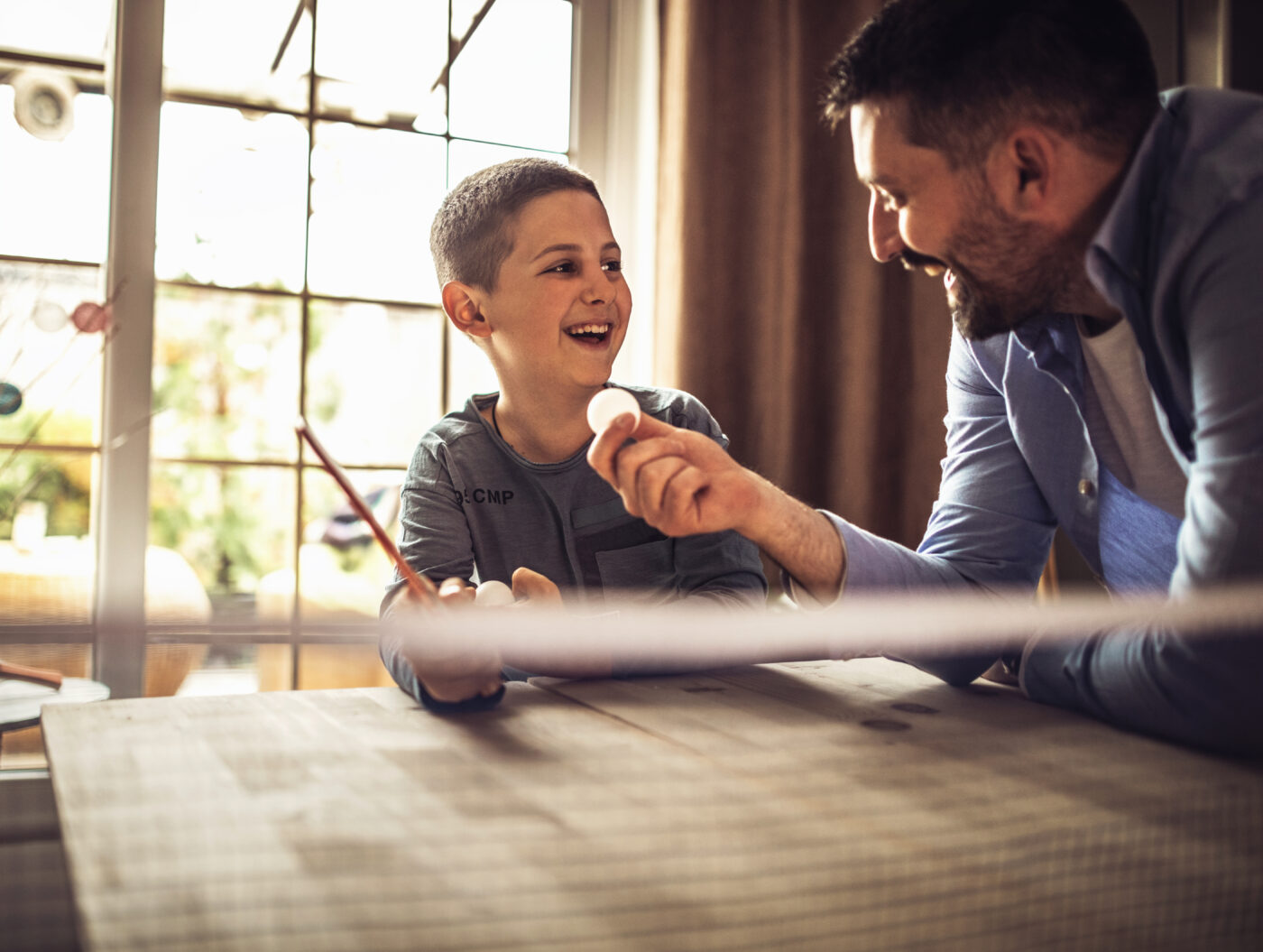Fishing can be a fantastic and fun sport for kids and parents. Learn how to introduce fishing to your prospective young angler and enjoy a wonderful activity that promotes family time together. Fishing is a rewarding sport — your family can get away from hectic schedules to enjoy the fresh air, learn about the environment, and even develop patience. Best of all, fishing is quality time spent together talking, laughing, and even sitting quietly side by side. It can be an ideal sport for little kids, if you introduce it in a positive way.
When fishing with young children, there are a few things to consider for your fishing trip to be a success: the location, the amount of time spent fishing, children’s physical limitations, supplies, safety and regulations.
Here are 6 steps to fishing success with your kids:
1. Location
If you’re choosing to fish from shore, find an easily accessible area. A short drive and a short walk to your spot are best; remember, the goal is to introduce a great sport to your new angler. You don’t want your child so tired when you get there that he or she will be unhappy and unable to enjoy fishing. Fishing from shore also provides other diversions for young children—they can take a break to toss pebbles into the water, dig in the dirt, or play with a toy you’ve brought along.
During this introduction process, set your child up for success by choosing a spot where you know there are fish. If possible, choose a shallow area where tiny fish can be seen. Preschoolers don’t have the luxury of waiting a few hours just to catch a fish or two. If you want to keep them excited and involved, you’ll have to go where the action is
2. Time Your Trip
The length of time spent fishing will be determined by your child’s age. Be prepared to stay only as long as your child is interested—maybe a half hour or so on your first outing. Don’t turn what can be a new adventure into a grueling marathon for your little one. If after a while your child is running all over and isn’t paying attention, it’s time to go.
Claude, father of Alex (age four) and Max (age five), recalls his initial experience. “Our first fishing adventure was hectic. Alex was sitting quietly holding the rod with all his might and Max was fidgeting all over the place. I realize now maybe I should have been on two little trips, with each child individually. Overall we thought it was fun and we did something together; that was my goal.”
3. Hook, Line, and Sinker
Provide your child with easy-to-use tackle. There are a variety of simple poles available designed specifically for little kids. These short rods, sometimes with kid-friendly characters, are appealing and less frustrating for small hands.
It will be physically impossible for your young child to hook the worm, cast the line, and reel in the fish alone. There are ways to overcome these obstacles. You can cast for your child and then give your child the rod. You can also attach a sinker so your child can release the line straight into the water. When hooking the worm, be aware of your reactions and remember that your children are watching—if you make handling the worm sound disgusting, kids may become squeamish and won’t want to touch it. Chances are if you don’t make a big issue out of it, they won’t either. Many children are actually fascinated by live bait.
Using a shoelace or a piece of string, you can attach the rod to an eyelet (on either the boat or dock). If a fish bites, and your child lets go of the rod, you won’t lose it at the bottom of the water.
4. Supplies
Make a list to check off with your child the supplies you will need. Include items such as food, water, sunscreen, bug repellent, first-aid gear, lifejackets, and a camera. Additionally, you may want to prepare a few “surprises”—such as a snack, crayons and a little notebook, or small toys—to occupy your child when he or she needs a diversion from fishing.
5. Stay Safe
Water accidents are especially concerning to parents of young children. When selecting your fishing spot, look for stable ground and be aware of hazards such as rocks that children could slip on into the water. There’s no need to frighten your child about the water, but be sure to discuss the rules—particularly if you’re fishing from a boat
If you’re fishing near fast-moving water or from a boat, children should always wear personal flotation devices, commonly called life vests. To meet boating requirements set forth by the U.S. Coast Guard and many states, boaters must have life vests when in a boat, and the boat must have one life vest for each person aboard. Boats longer than 16 feet must have a throwable flotation device—such as a cushion or life ring—in addition to the life vests. If you don’t own life jackets, check out the BoatU.S. Life Jacket Loaner Program.
Teach your child safety procedures such as lowering the rod and keeping it below the waist. It’s important to wash up after handling fish, too, so keep a supply of moist towelettes or hand sanitizer in your tackle box.
If it’s possible, clean the fish once you arrive at home. This way your child will not be left unsupervised near the water and you’ll be able to focus more on what you’re doing. Though they won’t be ready to do this task themselves, you can begin teaching children how to clean fish and the right way to dispense of the remains.
“There are too many ‘fishermen’ that just throw the remains anywhere but are not preoccupied with the environment side of the sport,” says Claude. “Some docks are littered with empty worm containers, lids, and other garbage. What example are they giving their children?”
Additionally, all states and provinces have their own regulations, and you should know them before you go out for an adventure. Make sure you find out about the quantity of fish allowed for one day, which types you can or can’t fish, and whether you and your child need a fishing license.
6. Making It Fun
There are a variety of books and posters available on the subject of fish. Spend some time looking at these with your child—he or she will begin to identify easily recognizable fish. Talk about the differences between fresh water fish and salt water fish. These are useful tools when you teach “catch and release”—when the caught fish is quickly set back into the water.
The important points to remember are to have fun, enjoy the outdoors, be safe, and be patient. Take pictures of your child with his or her prize catch. Make a big deal out of it! As your child’s attention span gets longer, so will you fishing trips, and you’ll be making memories your child—and you—will cherish for a lifetime.
SOURCE: www.babyzone.com









Huddle up with your kids tonight and ask them: When would you all like to go fishing?